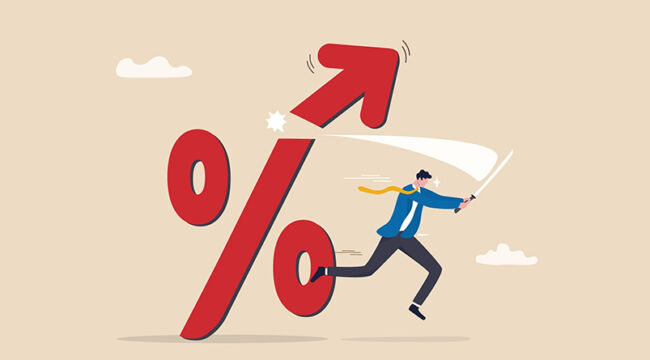by Jim Rickards, Daily Reckoning:

When will the Fed cut rates? Before giving you the answer, let’s back up.
Before last week’s Federal Reserve meeting, I offered readers the following forecast of what would happen at that meeting:
On Wednesday, the Fed will leave its target rate for fed funds unchanged. That decision will keep the federal funds target at 5.50% as set at the July 26, 2023 meeting. Over the course of fifteen FOMC meetings beginning March 16, 2022, I’ve been correct in all my forecasts including the “skipped” rate hikes at the June, September, November, and December 2023 meetings. I’m confident I’ll be correct on Wednesday also.
The Fed did keep the fed funds rate unchanged as I projected. That makes 16 Fed meetings in a row going back to March 16, 2022, when I got the Fed forecast right. Events remain uncertain from here, but it’s so far, so good for my forecasting.
TRUTH LIVES on at https://sgtreport.tv/
Here’s the text of part of the Fed’s press release issued last Wednesday:
The committee seeks to achieve maximum employment and inflation at the rate of 2% over the longer run. In support of these goals, the committee decided to maintain the target range for the federal funds rate at 5.25–5.50%. The committee will continue to assess additional information and its implications for monetary policy.
In determining the extent of additional policy firming that may be appropriate to return inflation to 2% over time, the committee will take into account the cumulative tightening of monetary policy, the lags with which monetary policy affects economic activity and inflation, and economic and financial developments.
In addition, the committee will continue reducing its holdings of Treasury securities and agency debt and agency mortgage-backed securities, as described in its previously announced plans. The committee is strongly committed to returning inflation to its 2% objective.
No Typical Fed-Speak
If that press release sounds like bland Fed-speak, it’s not. It’s actually one of the most dramatic announcements the Fed has made in quite some time.
Of course, they did not cut rates, but they offered enormous insight in terms of when they might cut rates and even left open the option that they might raise rates.
This was all a bit of an earthquake relative to market expectations, which is why stocks quickly retreated after the announcement. The Dow Jones Industrial Average fell 0.82%, the S&P 500 fell 1.61% and the tech-heavy Nasdaq Composite fell 2.23%.
Wall Street was priced for the “pivot” to lower rates in March. What they got was a bucket of ice water thrown in their faces.
The key phrase was “The committee does not expect it will be appropriate to reduce the target ranges until it has gained greater confidence that inflation is moving sustainably toward 2%.”
Translating from the double negative to plain English, the Fed said it does not have such confidence today that inflation is contained. Powell made this explicit in his press conference. He said, “We want to see more good data.”
In fact, Powell was like a broken record about the Fed needing to see more evidence that inflation really is under control. He said rate cuts will not happen, “Until we have gained greater confidence that inflation is moving steadily toward our goal of 2%.”
He then said, “We just need to see more evidence that confirms what we’re seeing… and gives us confidence.” He topped this off by repeating, “It will be appropriate to reduce rates… but we need to be confident that inflation is coming down sustainably to 2%.”
What Comes Next
OK, Jay. We get it. Rates are not coming down until you see several months of data that show inflation coming down and staying down. Sounds familiar. In my pre-meeting report last week, I made the same point. Here’s what I said about inflation:
The reasons for the Fed sitting tight and not cutting rates (the infamous “pivot” that Wall Street has been wrong about for almost two years) is that the Fed is losing the battle against inflation.
When inflation (measured monthly by CPI on a year-over-year basis) dropped from 9.1% in June 2022 to 3.0% in June 2023, the Fed was ready to declare victory. The Fed’s goal was still 2% annualized inflation, but progress from 9.1% to 3.0% was so dramatic that 2.0% seemed well within reach. It was around that time (July 2023) that the Fed hit the pause button on further rate hikes.
Since then, the news has been uniformly bad for the Fed. Inflation jumped up to 3.2% in July 2023, and then spiked to 3.7% in August 2023. That new higher level at 3.7% was maintained in September. Inflation retreated a bit to 3.2% in October and 3.1% in November, but those results were still higher than the 3.0% last June when the Fed declared victory. December presented another nasty surprise. Inflation rose again, this time to 3.4%, which produced an average for the full year 2023 of 4.1%. In short, not only is inflation not coming down, it has moved up since June and is holding those higher levels.
In other words, Powell saw what we saw. Inflation has come down but not far enough. Lately, inflation has actually been going up and may rise higher because of oil prices. The Fed is nowhere near to rate cuts and Powell effectively said that.
Powell Telegraphs His Intentions
Powell also did something he never does. He gave a detailed forecast about what the Fed will do at the next meeting on March 19–20, 2024. He said, “I don’t think it’s likely that the committee will reach a level of confidence to reduce rates at the March meeting.”
There you have it. Wall Street can forget about rate cuts until at least the May 1, 2024, meeting and probably longer if higher oil prices have the lagged effect on consumer prices that I expect.
Read More @ DailyReckoning.com



